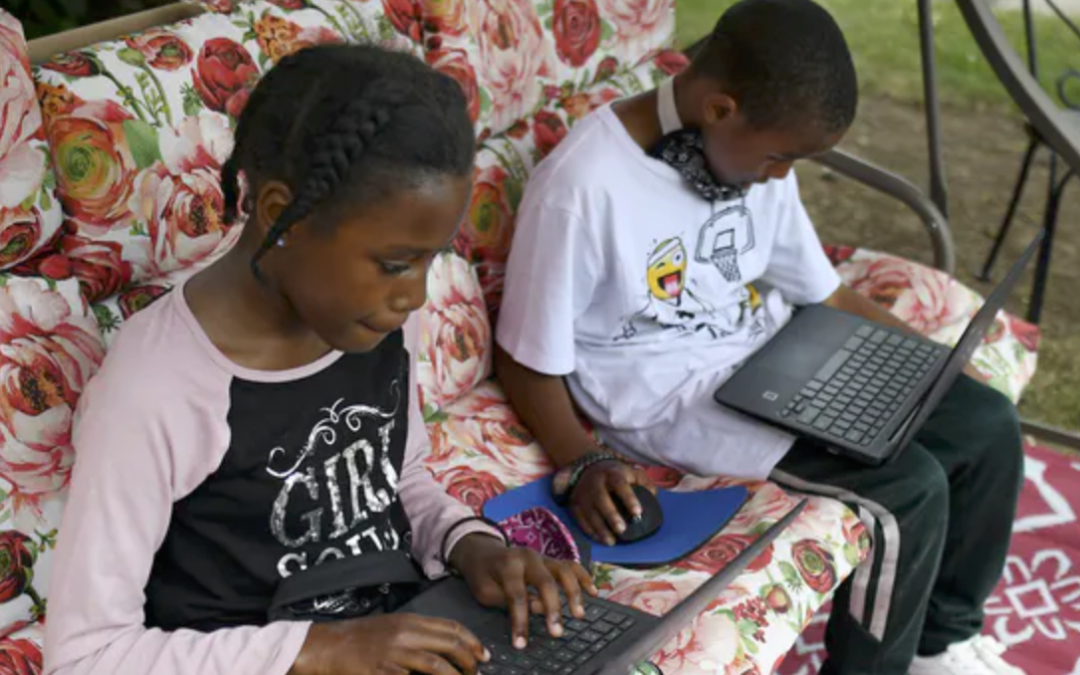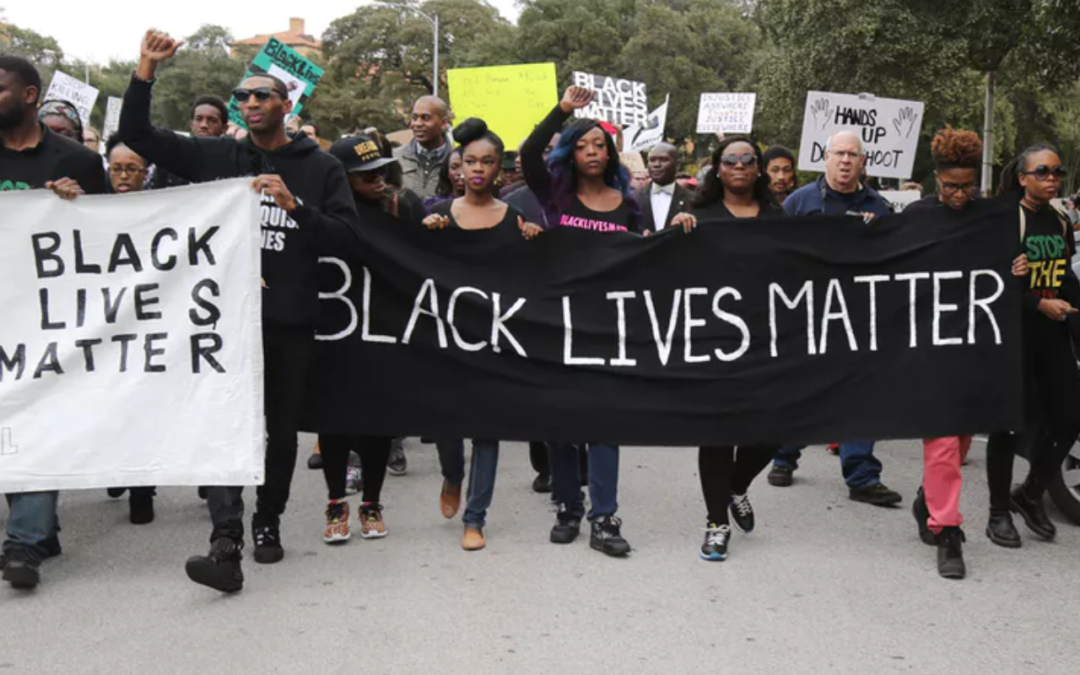
Black Panthers and Black Lives Matter — parallels and progress
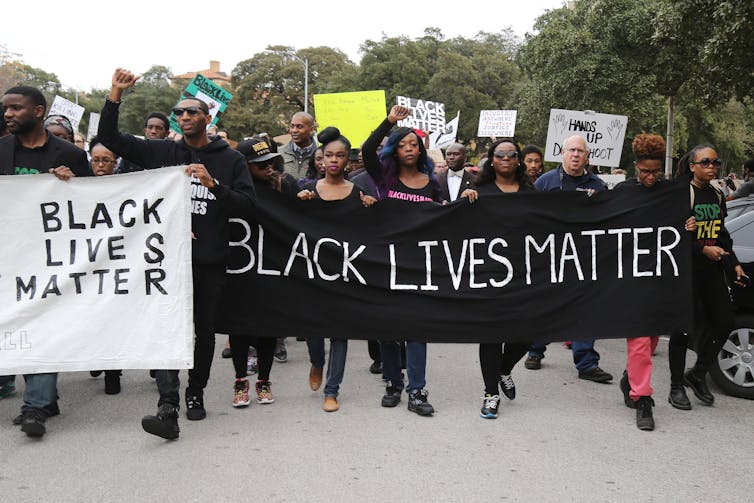
Elizabeth Brossa/flickr, CC BY-NC-SA
Comparing the 1960s and 1970s Black Panther Party and today’s Black Lives Matter movement reveals parallels and progress.
Stanley Nelson’s recently released film The Black Panthers: Vanguard of the Revolution juxtaposes the party’s justice movement against the Black Lives Matter protest campaign.
Conceived about 50 years apart, both Black Lives Matter and the Black Panther Party for Self Defense galvanized frustration with police brutality against black people in the US.
Alicia Garza created Black Lives Matter, with Patrisse Cullors and Opal Tometi, as a call to action after the acquittal of George Zimmerman for killing 17-year-old unarmed Trayvon Martin in 2013. The Black Panther Party was formed, in part, in reaction to the police killing of Matthew Johnson, an unarmed black 16-year-old, in San Francisco in 1966.
The commonalities between Black Lives Matter and the Black Panther Party are more striking when they are compared to the mid-20th-century civil rights movement, which took place when segregation was legal and black people protested politely and defensively.
Looking ‘proper’
According to filmmaker Stanley Nelson, it was important for civil rights leaders to win the hearts and minds of the press, a majority white American public, and a cautious black middle class. In an interview with NPR, he goes on to explain that civil rights organizers insisted, “‘we’re going to look proper…’ to show the difference between them and the mobs that would be chasing them or screaming at them.”
The Black Panthers were not interested in mainstream press or general public approval. They had their own newspaper designed, art-directed and heavily illustrated by Black Panther Party artist and Minister of Culture Emory Douglas. It showed images that would never appear in the mainstream press.
As I observed in a 2007 essay on Douglas’s work:
“Part of Douglas’s genius was that he used the visually seductive methods of advertising and subverted them into weapons of the revolution. His images served two purposes: to illustrate conditions that made revolution a reasonable response and to construct a visual mythology of power for people who felt powerless and victimized.”
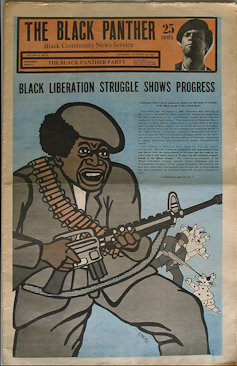
© 2015 / Emory Douglas / Artists Rights Society, New York

The Black Panther newspaper showed photographic evidence of police brutality along with editorial drawings and cartoons illustrating black people fighting back.
Black Lives Matter uses cellphone photographs, videos and commentary that often quickly go viral through social media.
Each movement used available media to reach broad constituencies and stimulate action.
The Panthers’ messages were instructive, visual, and covered a range of ambitions, included in the party’s 10-point platform.
The phrase “Black Lives Matter” may seem deceptively simple to those who receive the words as a veiled threat. Perhaps they believe that equality has been achieved and systemic and institutionalized racism no longer exist.
In the 50 years since segregation and legal discrimination ended and the US tried to “move past” its racist history, much of that history was ignored and effectively forgotten. Blacks and whites have differing perceptions of how much progress has been made on racial equality. Polls show that white millennials have about the same racial viewpoints as baby boomers.
This racial knowledge vacuum does not allow some people to believe that black people and other people of color are routinely treated more harshly by police and law enforcement officers. Black Lives Matter’s insistence on presenting evidence of inequality is disturbing to these deniers.
At the time of the Black Panthers, just a few years after civil rights legislation, most black people still lived in poverty with substandard everything – from housing to schools to health care. Even though the political establishment disagreed on what should be done to change it, no one denied there was a problem.
Disruption and pushback
As activist Deray McKesson points out, “protest is confrontation and disruption.” In addition to protesting at the time and scene of controversial police events, Black Lives Matter protesters disrupt everyday life and activities, which creates pushback.
Minnesota Governor Mark Dayton responded to last summer’s #BlackFair protest against the small number of black vendors at the state fair by saying, “I just think the way they’re proposing to deal with it is irresponsible.” Another peaceful protest for Black Lives Matter at the Twin Cities Marathon on October 4 2015 brought disagreement between supporters of the movement. Ashley Oliver, a member of Black Lives Matter in Minneapolis and legal chairwoman of the city’s NAACP chapter, told the Star Tribune newspaper that disrupting the marathon was the wrong way to get the group’s message out. “Our message will get lost,” she claimed.
Black Lives Matter organizer Netta Elize explained why the protests must happen at seemingly nonrelated events. She said, “Black people in the US do not have free space to live. The ability to participate in everyday activities without having to think about race is a privilege.”
In their time, the Panthers were marginalized and vilified, limiting their main sphere of public operations to college campuses and other left-friendly venues. Only the most fear-producing images of Panthers appeared in mainstream press, reiterating the FBI’s claim that the organization was the greatest threat to national security.
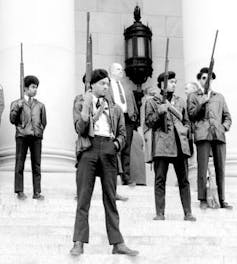
Seattle Black Panther Party History and Memory Project
Visual tactics
Like the Black Panther Party, Black Lives Matter protesters use elements of “visual theater.” The Panthers’ carefully constructed visual presence included uniforms for members, creating icons for party members that represented strength, purpose, and discipline. As Stanley Nelson’s film points out, the Panthers understood media and the power of visual images.
Black Lives Matter uses visual tactics such as light brigades and more theatrical “die-ins,” to convey an omnipresent threat of violence or death.

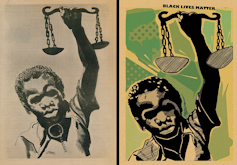
To comment on current conditions for black people in the US, artist Emory Douglas repurposed one of his drawings – 39 years after its original appearance in November 1976 in the pages of The Black Panther newspaper – to promote Black Lives Matter.
The original image, he said, was about justice in general, not a specific event. In the new version, Douglas made the scales of justice even larger.![]()
Colette Gaiter, Associate Professor, Department of Art and Design, University of Delaware
This article is republished from The Conversation under a Creative Commons license. Read the original article.

